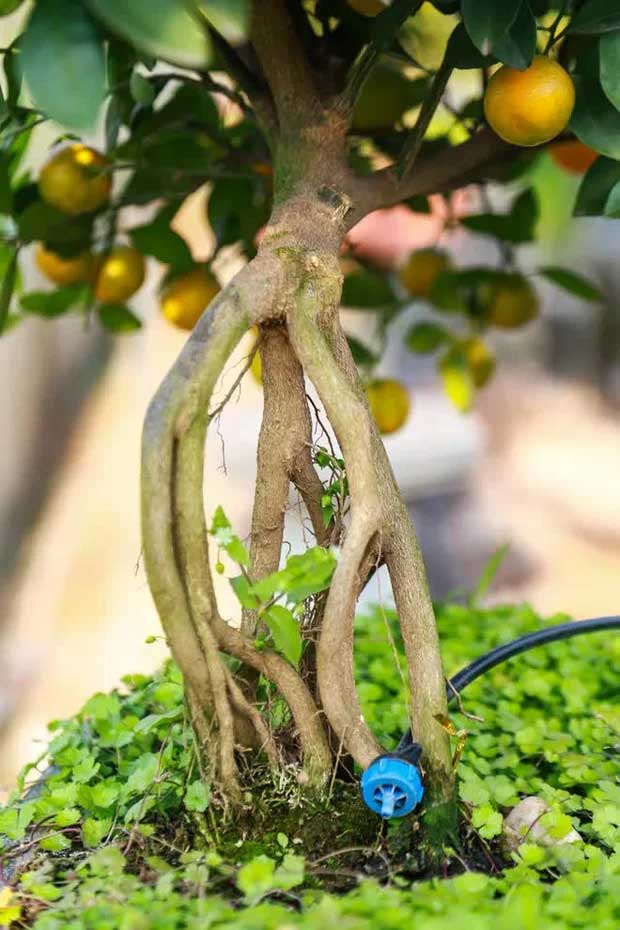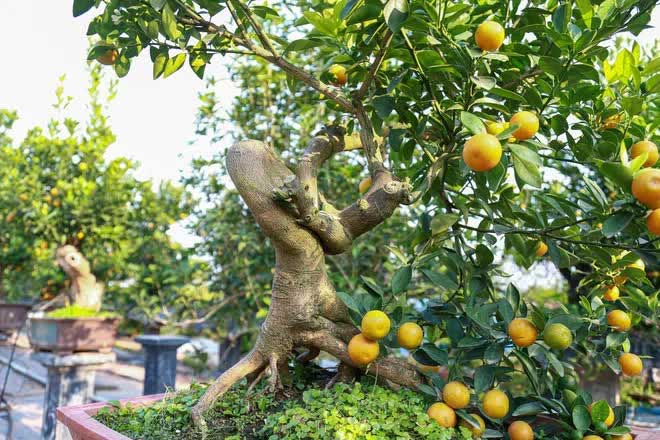The Kumquat Tree with Exposed Roots is a popular decorative plant sought after for the Lunar New Year 2024 due to its unique and striking root structure that rises above the ground.
In Sino-Vietnamese, “mộc” means tree, and “căn” means root. The Kumquat Tree with Exposed Roots refers to a kumquat tree that displays its roots prominently, showcasing a beauty that is both strong and graceful.
The Kumquat Tree with Exposed Roots has been studied and introduced to the market about five years ago; however, it has gained popularity over the last two years. Ms. Ngô Thu Trang, the owner of Xuân Lộc Nursery in Tứ Liên (Hanoi), stated: “Our nursery produces nearly 1,000 Kumquat Trees with Exposed Roots each year. However, most of these trees are already reserved by customers since October.”
“We call it ‘Kumquat Tree with Exposed Roots’ to emphasize the most important artistic criterion, which lies in the tree’s root system, symbolizing the strength of its roots, just like humans. No matter how difficult life gets, we must always strive to rise above it,” explained Ms. Trang.



The shape of the trees varies depending on the amount of roots each tree has.
The Kumquat Tree with Exposed Roots comes in various shapes and styles such as: Brotherly, Mother-Child, Waterfall, Five Blessings, Three Abundances, Four Seasons, and Prosperity Vase. Currently, the price of Kumquat Trees with Exposed Roots at the nursery ranges from 3 to 15 million VND. Larger trees with beautiful roots can cost several tens of millions of VND.
Creating a desirable Kumquat Tree with Exposed Roots requires significant effort from caretakers. When the tree is small, the nursery buries the roots deeply in the soil to promote growth. As the roots grow longer and thicker, the workers gradually raise the tree above the ground until the roots are exposed, then start shaping and styling it. On average, excluding the nurturing period, it takes about three years to create a finished product.
The most challenging aspect of caring for the Kumquat Tree with Exposed Roots is that exposing the roots makes it harder for the tree to absorb nutrients and can lead to quicker soil dryness. Therefore, the nursery must employ techniques to minimize the impact on the tree’s living quality.
Depending on the amount of roots, the nursery shapes the trees in various styles: sometimes soft and flowing like ocean waves, other times sturdy like a three-legged stand, or intertwined to form clusters, symbolizing unity and cohesion. Trees with larger, older roots signify greater age and value.
The exposed root system symbolizes that despite life’s challenges, one can always rise strong.
Alongside the root system, the Kumquat Tree with Exposed Roots must also have a harmonious overall structure, coherent design, smooth transitions, and rhythmic arrangements that highlight the beauty of the trunk and branches. Most importantly, the tree must meet the four essential criteria of “green – ripe – flower – fortune,” just like other ornamental kumquat trees.




















































